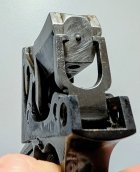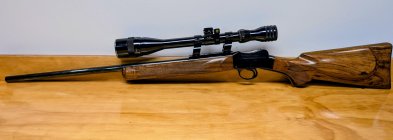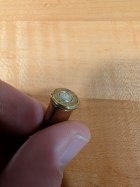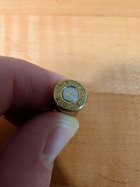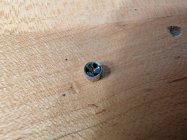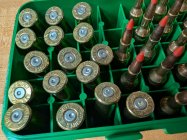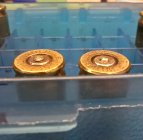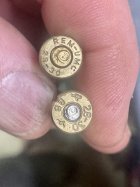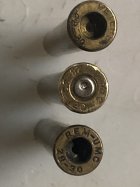I'll share some more information including back story that may answer some questions/comments. Purchasing this rifle has been an emotional event for me and by far the worst gunbroker purchase I've made.
I'll start with a warning for gunbroker buyers: I bought this rifle and paid over going rates because it's absolutely beautiful, from most angles. It came and I immediately noticed bluing loss on a section on the barrel that was cleverly excluded from pictures. I got it home and put a light through the barrel - dirty as hell. I cleaned it and scoped it - rust. This seller was unbelievable, he had shipped it loose in a cardboard box wrapped in dirty/greasy t-shirts and rags and with the live ammo and a busted cleaning rod also bouncing around. No paperwork. I thought my FFL was going to fire me, but after obtaining a copy of an expired drivers license from the seller he processed it. I've actually had luck over the years in buying custom rifles from private sellers at great prices when they don't have a ton of pictures (scares other buyers off) and this guy had like 300+ positive only reviews so it was a calculated risk. I let him know my displeasure and he blasted me telling me how fortunate I was to get such a great deal on this rifle. I left an honest and factual review on his GB and he responded to it with inappropriate comments and put my personal information in his public response and in a review against me. When I contacted gunbroker, I asked that they modify his reviews to remove only my personal information - I'm fine with my own negative review if it warns other buyers. This guys tactics worked and GB removed my review altogether. I emailed them afterwards letting them know that I didn't think it was an appropriate action and they did not respond. Just sharing this because, obviously, this guy figured out how to play GB to remove negative reviews and to highlight that gunbroker.com clearly does not care about the buyer.
Back to the rifle: I tried soaking in oil and then running a brush to loosen the rust but eventually ended up using evaporust (carefully) then cleaning the bore with sweets which worked really well. So it's very clean at this point - no rust, copper or fouling. Rifling is still sharp so I planned to run a few hundred rounds through it and foul it back up, hoping that it'll be accurate and fun to shoot.
The brass: It came with over a hundred formed/fireformed cases and loaded ammo. In conversation with the seller before the purchase, he had purchased the brass custom-made from a 'professional' so I expected it to be 'ready to fire'. I never shoot someone else's reloads so I planned to tear them down and load with my own charges. Half of them didn't chamber as-is so I knew they needed to be resized as well. So for tearing them down, I typically use a frankford arsenal pile driver. I love my pile driver. If I want to tear one of my own reloads down, I cycle the pile driver once and it is disassembled. Factory ammo or crimped ammo might take 3 cycles. I had some old ammo with welded necks once, that took up to 7 cycles. This 17 ackley bee ammo took 20 plus cycles per round. I swear they were glued in. I resorted to press mounted bullet puller. The charged were a variety of like three different powders and were so compressed that I had to put them back in the pile driver to dump the powder. Many of the cases already had split necks and I ended up with around 75 cases to work with. I guess, as unbelievable as this experience has been, that I should have just pitched the $10 worth of primers - but I have never had issues with using grab bag primers for fire forming so I didn't even think about it. I set my die to set the shoulder length for a few of the cases that chambered - annealed/resized/cleaned all of the brass.
Anyway, long story but in regards to charges - most sources that I found had recommended 13-14 grains of IMR 4198. The cases shown were 11.7, 11.9 and the one that was stuck was 12.2 grains. I just wanted to start low and work my way up. These cases had all been previously formed and I believe they are sized correctly. I pulled the block again and there's no clearance around the pin that would suggest this needs to be bushed. Pictures attached for those that made it this far.
Not sure if it's the primers as some suggest, or an undercharge. At this point I think I'll tear down a handful of these and load with Remington 7 1/2 BR primers that I have and usually prefer. It may be a while for another update with range time, I started a training program at work and have very little free time for hobby-ing this year (combined with way too many projects like this). Thank you for all of the input!
